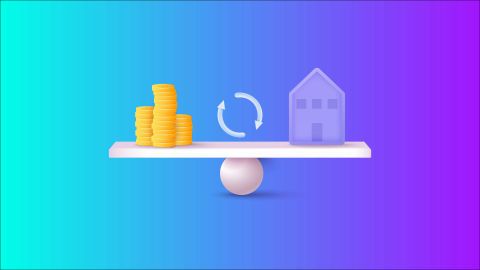As the financial year 2023-2024 unfolds, individuals earning a salary of Rs. 10 lakh face important decisions regarding income tax. Understanding the tax slabs, deductions, and exemptions are crucial for optimising tax liability. In this article, we will explore the income tax implications under both the new and old tax regimes, along with deductions, exemptions, and the minimum deductions required for incomes exceeding Rs. 10 lakh.
Income tax slabs for FY 2025-2026 as per the new tax regime
The new tax regime, designed to simplify tax structures, offers lower tax rates but with fewer deductions. For individuals earning Rs. 10 lakh, the income tax slabs are as follows:
- Up to Rs 4 lakh: Nil tax
- Rs 4,00,001- Rs 8,00,000 : 5%
- Rs 8,00,001 lakh - Rs 12,00,000 : 10%
- Rs 12,00,001 lakh - Rs 16,00,000: 15%
- Rs 16,00,001 lakh - Rs 8,00,000 : 20%
- Rs 20,00,001 lakh - Rs 24,00,000 : 25%
- Above Rs 24,00,001 : 30%
This implies that if your annual income is Rs. 10 lakh, you fall within the 10% tax bracket under the new regime.
Income tax slabs for FY 2024-2025 as per the old tax regime
For those opting to stay with the old tax regime, which provides more deductions and exemptions, the slabs are:
- Up to Rs. 2.5 lakh: Nil
- Rs. 2,50,001 to Rs. 5,00,000: 5%
- Rs. 5,00,001 to Rs. 7,50,000: 10%
- Rs. 7,50,001 to Rs. 10,00,000: 15%
Comparing the two regimes, individuals earning Rs. 10 lakh might find the old tax regime advantageous due to the higher deduction options.
New Income Tax Regime and Old Tax Regime
Net Annual Income |
Old tax regime | New tax regime |
Up to Rs. 2.5 lakh |
Nil |
Nil |
Rs. 2.5 lakh – Rs. 4 lakh |
5% |
Nil |
Rs. 4 lakh – Rs. 5 lakh |
5% |
5% |
Rs. 5 lakh – Rs. 8 lakh |
20% |
5% |
Rs. 8 lakh – Rs. 10 lakh |
20% |
10% |
Rs. 10 lakh – Rs. 12 lakh |
30% |
10% |
Rs. 12 lakh – Rs. 16 lakh |
30% |
15% |
Rs. 16 lakh - Rs. 20 lakh |
30% |
20% |
Rs. 20 lakh - Rs. 24 lakh |
30% |
25% |
More than Rs. 24 lakh |
30% |
30% |
How to calculate income tax on Rs. 10 lakh salary?
- Determine gross income: Start with your total salary, which is Rs. 10 lakh
- Claim deductions: Use deductions under Section 80C, up to Rs. 1.5 lakh, if applicable.
- Calculate taxable income: Subtract deductions from your gross income (Rs. 10 lakh - Rs. 1.5 lakh = Rs. 8.5 lakh).
- Refer to tax slabs: Use applicable tax slabs to calculate your tax liability.
- Use an income tax calculator for precise calculations and to simplify the process.
Deductions and exemptions under new tax regime
Under the new tax regime, deductions and exemptions are limited. However, taxpayers can still claim deductions under Section 80CCD (2) for an employer's contribution to the National Pension Scheme (NPS).
Here are some key points regarding deductions and exemptions under the new tax regime:
- Standard deduction:
The new tax regime provides a standard deduction of Rs. 50,000 for salaried and pensioned individuals. - Deductions under Section 80CCD (2):
Taxpayers can claim deductions for the employer's contribution to the National Pension Scheme (NPS) under Section 80CCD (2). - Other deductions and exemptions:
Most traditional exemptions and deductions available under the old tax regime, such as House Rent Allowance (HRA), Leave Travel Allowance (LTA), and deductions under Sections 80C (like Provident Fund contributions, life insurance premiums, etc.), are not available in the new tax regime. - No exemptions for allowances:
Various allowances like transport allowance, medical reimbursement, and other exemptions that were available in the old regime are not applicable in the new regime. - Taxpayers' choice:
Taxpayers have the flexibility to choose between the new and old income tax regime based on their individual financial situations. While the new regime offers lower tax rates, the old regime provides more deductions and exemptions, allowing taxpayers to reduce their taxable income.
Minimum deduction required if income is more than Rs. 10 lakh
When your income exceeds Rs. 10 lakh, exploring deductions becomes essential to optimise your tax liability. Here are some common deductions that individuals can consider if their income surpasses Rs. 10 lakh:
- Section 80C deductions:
Individuals can claim deductions under Section 80C for various investments and expenses, including contributions to the Employees' Provident Fund (EPF), Public Provident Fund (PPF), Equity-Linked Savings Scheme (ELSS), National Savings Certificates (NSC), and payment of life insurance premiums. - Home loan interest (Section 24(b)):
If you have a home loan, the interest paid on the loan is eligible for deduction under Section 24(b) of the Income Tax Act. This deduction is available for both self-occupied and let-out properties. - Health insurance premiums (Section 80D):
Deductions can be claimed under Section 80D for premiums paid towards health insurance policies for yourself, your spouse, children, and parents. The deduction limit depends on the age of the insured individuals. - National Pension Scheme (NPS) (Section 80CCD):
Apart from the employer's contribution, individuals can also claim deductions for their contributions to the National Pension Scheme (NPS) under Section 80CCD. - Education loan interest (Section 80E):
If you have taken an education loan for yourself, your spouse, or children, the interest paid on the loan is eligible for deduction under Section 80E. - Standard deduction:
In the new tax regime, there is a standard deduction of Rs. 50,000 available for salaried and pensioned individuals.
Calculate income taxes based on different salary amount
Here’s a quick look at income tax liabilities for various salary brackets under the new regime:
Salary Amount |
New Tax Regime - Income Tax Amount (Approximate) |
Old Tax Regime - Income Tax Amount (Approximate) |
Rs. 11700 |
Rs. 12,500 |
|
Rs. 10 lakh |
Rs. 33800 |
Rs. 1,00,000 |
Rs. 54600 |
Rs. 1,50,000 |
|
Rs. 97500 |
Rs. 1,80,000 |
Understanding your tax liability can help you plan better for your finances. For a comprehensive breakdown of income tax rates and deductions, consider using a tax calculator to simplify the process.




